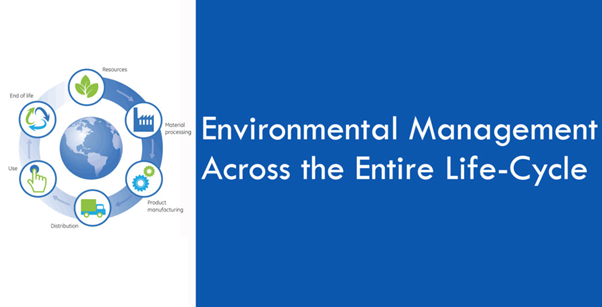Environmental Management Systems: Updates to ISO 2015
Written By: Michael Tsang, Ph.D. | Date: 2018

Environmental Management Systems (EMS) have been a mainstay for the last 2 decades for how organizations and companies can control their impact on the environment and human health. Perhaps the most well-known EMS standard is ISO 14001 which was first promulgated in 1996. Since then, it has been revised twice, once in 2004 and just recently in 2015 (now referred to as ISO 14001:2015).
Each iteration has brought with it more clarity and strength in terms of environmental and public health protections built into its guidance. A number of well-thought out improvements made its way from the 2004 to 2015 standard, for instance, how its overall structure directly parallels that of ISO 9001:2015 (and the forthcoming ISO 45001 Occupational Health and Safety Standard, roughly to be based on the current British Standard OHSAS 18001) in order to streamline and enhance overall management, implementation and enforcement of these related standards./p>
However, the content of ISO 14001:2015 now explicitly includes a greater scope in terms of how entities outline their environmental and human health impacts. Specifically, the 2015 standard now includes the explicit reference to life-cycle thinking and life-cycle impacts. What does this mean exactly? In straightforward terms, it implies (a) that an organization must look at both its upstream-supply supply chain as well as its downstream-users and end-of-life issues (e.g. waste-disposal practices). This is what is considered as a life-cycle perspective, taking into account everything from minerals extraction, materials processing, product manufacture (or service development), how the product (or service) is used, and how products and their wastes (or wastes from services) are disposed of. (Note: this implicitly means things such as transportation and other services are also included!)
This comprehensiveness of this new standard is hugely important for a few reasons. First, global markets mean that th supply chains and partnerships are nowhere near regional in most markets. Products can be made in China, with minerals minded in Africa, energy purchased from the Middle East, and exported/consumed in the United States. Thus, it is easy to see how ineffective EMSs can become without a standard that promotes the evaluation and coordination of across whole supply chain. Secondly, environmental phenomenon such as climate change have no meaningful borders or boundaries. Taking this example further, greenhouse gas emissions in the EU are going to have a consequence on the people of South East Asia, and vice versa.
Lastly, life-cycle thinking involves a holistic view of environmental and human health protections. This means that all relevant potential impacts should be taken into consideration as opposed to just those most evident to the decision maker. For example, while climate change is an impact on most people's radars, there are many other impacts to consider such as ozone depletion potential, smog formation, eutrophication of waterways, water scarcity, eco-toxicity, and human toxicity, among other.
While all these concepts come from the more formal application of life-cycle assessment (LCA), as outlined in ISO 14040:2006, Annex II of the new ISO 14001:2015 standard only requires that an organization consider its upstream and downstream impacts from a life-cycle perspective. However, conducting a full LCA study under ISO 14040:2006 has many more advantages, such as development of product-level analyses that allow for eco-design and environmental product declarations (ISO 14025:2006), for example. Please contact Three Pillars Consulting if you want more information regarding how to upgrade your current ISO 14001:2004 certification to ISO 14001:2015 or to understand more about life-cycle thinking and LCA (ISO 14040:2006).
Looking for Expert Analysis?
Send us an email or schedule a call with us to discuss your questions and needs regarding carbon, energy, and sustainability.
Contact
Want to contact us about our services and products? Give us a call or send us a message by using the form below.
Location:
Three Pillars Consulting (TPC)
Al Noor Plaza (Building 2118), Unit 107
Al Bashair Street | Madinat Sultan Qaboos, Muscat | Oman
Postal Code 116
Email:
contact@threepillarsgroup.com
Call:
+968 2496 7611
